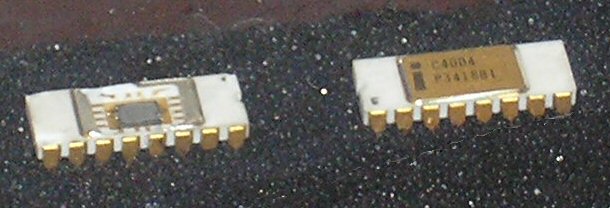One of the presentations I attended at KiCon 2019 was one entitled "Preserving History with KiCad" by James, the self-professed "Bald Engineer". Given my work with recreating the Intel 4004 CPU, his presentation sounded interesting to me.
Saturday, June 22, 2019
Thursday, June 20, 2019
Making Xilinx ISE 14.7 run on Ubuntu 18.04
While cleaning my office I came across a timing diagram I'd drawn for an HDMI decoder I'd starting writing for the Digilent Atlys board, which has a Xilinx Spartan 6 FPGA. Curious to see how far I'd taken this project, I fired up the Xilinx ISE IDE. Or at least I tried to.
The last time I ran ISE I was running a derivative of Ubuntu 16.04. Now that I'm running a derivative of Ubuntu 18.04, ISE wouldn't run. And since ISE hasn't been updated since 2013 (and won't be), this is a problem. Here's the error message I got:
The last time I ran ISE I was running a derivative of Ubuntu 16.04. Now that I'm running a derivative of Ubuntu 18.04, ISE wouldn't run. And since ISE hasn't been updated since 2013 (and won't be), this is a problem. Here's the error message I got:
libpng warning: Application jmp_buf size changed
Thursday, June 6, 2019
Flipping the P170-DH power circuit layout
Last August I realized why some components on the original Canon P170‑DH calculator were mounted on the top of the board and some were mounted on the bottom: placing the through-hole components on top and the SMDs on the bottom allowed everything to be soldered on the bottom side of the board. That may have been a requirement, given the use of carbon tracks on the top side.
The original board used through-hole components for the power section. On my replacement board the only through-hole components are connectors, a fuse, and an electrolytic filter capacitor. None of the ICs I'm using are available in through-hole packages, and the FPGA has to be mounted on the bottom of the board because there isn't enough room to mount it other than behind the keypad.
Following the layout of the original board I'd placed the power section components on the top of the replacement PC board. Recently, though, I've reconsidered that arrangement. I'm just a bit concerned about surface-mount components already soldered on one side coming loose while later soldering the components on the other.
After making sure the schematic and board files were checked into my content management system (I use Git) I spent an evening flipping the power section circuits onto the bottom of the board. This required re-routing most of the circuits, and I took the opportunity to rearrange some of the circuits to make room for some components I hadn't placed yet. I haven't finished the re-route yet, but I'm happier than I was.
The original board used through-hole components for the power section. On my replacement board the only through-hole components are connectors, a fuse, and an electrolytic filter capacitor. None of the ICs I'm using are available in through-hole packages, and the FPGA has to be mounted on the bottom of the board because there isn't enough room to mount it other than behind the keypad.
Following the layout of the original board I'd placed the power section components on the top of the replacement PC board. Recently, though, I've reconsidered that arrangement. I'm just a bit concerned about surface-mount components already soldered on one side coming loose while later soldering the components on the other.
After making sure the schematic and board files were checked into my content management system (I use Git) I spent an evening flipping the power section circuits onto the bottom of the board. This required re-routing most of the circuits, and I took the opportunity to rearrange some of the circuits to make room for some components I hadn't placed yet. I haven't finished the re-route yet, but I'm happier than I was.
Subscribe to:
Posts (Atom)
